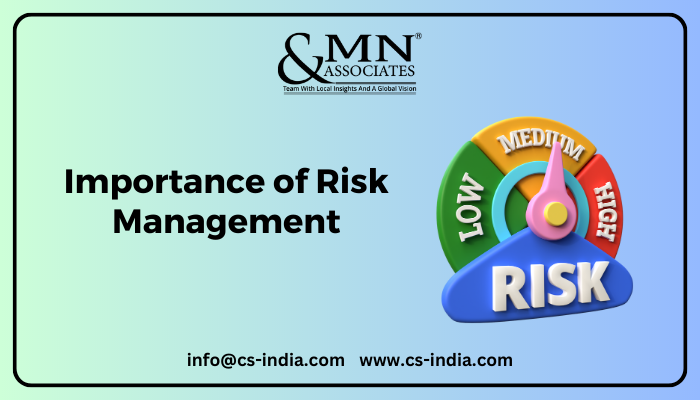The Crucial Importance of Risk Management in Protecting Business Assets
The Crucial Importance of Risk Management in Protecting Business Assets
Blog Article
The Critical Significance of Risk Management in Achieving Organizational Goals
In the swiftly progressing organization landscape, the capability to navigate unpredictability has ended up being a critical. This is where Risk Management action in, providing an organized approach to identifying, examining, and mitigating possible barricades to progress. It's more than simply a safety step - it's a strategic tool, promoting resilience and advancement. As we explore the critical role of Risk Management in achieving organizational objectives, one can't help yet wonder: how does this translate into real-world success?
Understanding the Concept of Risk Management in Business

The Integral Duty of Risk Management in Strategic Planning
Incorporating Risk Management right into critical preparation works as a guard for organizations, securing their long-lasting strategies with a solid structure of readiness and strength. It operates as the organization's radar, detecting possible risks and vulnerabilities that might interfere with the path in the direction of attaining their stated purposes. Risk Management provides a structure for anticipating unpredictabilities and creating appropriate reactions, guaranteeing the company's survival and prosperity even when faced with misfortune. By incorporating Risk Management right into tactical planning, organizations can transform these uncertainties into possibilities for development and innovation. This strategic interweaving of Risk Management promotes adaptability, making organizations much more durable and enabling them to browse the ever-changing company landscape confidently. Risk Management ends up being an important device in tactical preparation, important in safeguarding sustainable success.

Methods for Identifying, Assessing, and Prioritizing Risks
The process begins with Risk identification, using devices such as SWOT analysis, which aids in determining possible threats and opportunities. Next, Risk evaluation is performed to determine the possible effect and chance of each Risk. Risks are focused on based on their prospective influence and probability, permitting organizations to focus their resources on critical risks.
Safeguarding Organizational Workflow Through Effective Risk Management
In the organization landscape laden with unpredictabilities, effective Risk Management plays a pivotal duty in guarding business operations. By determining and evaluating prospective dangers, Risk Management allows companies to establish durable backup plans. Companies should invest in comprehensive Risk Management strategies to protect their procedures.

Transforming Potential Risks to Opportunities: The Power of Risk Management
A proactive approach to run the risk of Management includes determining, examining, and focusing on threats to design approaches that turn them right into prospective benefits. Hence, go to this site by leveraging the power of Risk Management, organizations can not just guard their procedures yet likewise stimulate growth and attain their goals in an unforeseeable business setting.
Case Studies: Success Stories of Risk Management Driving Organization Objectives
Successful implementation of Risk Management methods has actually yielded remarkable outcomes in various services, underscoring the qualities of this method. International firms like Microsoft and Google, for instance, have actually leveraged Risk Management to minimize hazards and exploit possibilities, driving their service purposes onward. These examples show just how effective Risk go to these guys Management can not only steer companies clear of prospective mistakes yet likewise assist them towards their tactical goals.
Conclusion
In conclusion, Risk Management is basically vital in achieving business objectives. It offers a systematic approach to determining, evaluating, and resolving potential threats and possibilities. More than just mitigating dangers, it also promotes advancement, resilience, and lasting growth. By incorporating Risk Management right into calculated preparation, organizations can much better browse unpredictabilities, protect operations, and capitalise on chances, consequently straightening with long-term objectives.
At its core, Risk Management is the procedure of identifying, assessing, and dealing with potential dangers that can negatively influence a company's goals or procedures. Next, Risk evaluation is carried out to ascertain the prospective influence and likelihood of each Risk. Threats are focused on based on their potential influence and probability, permitting organizations to focus their sources on high-priority risks. By determining and analyzing potential hazards, Risk Management More Help enables companies to establish durable backup strategies. An aggressive strategy to risk Management includes identifying, assessing, and prioritizing risks to create approaches that transform them right into possible benefits.
Report this page